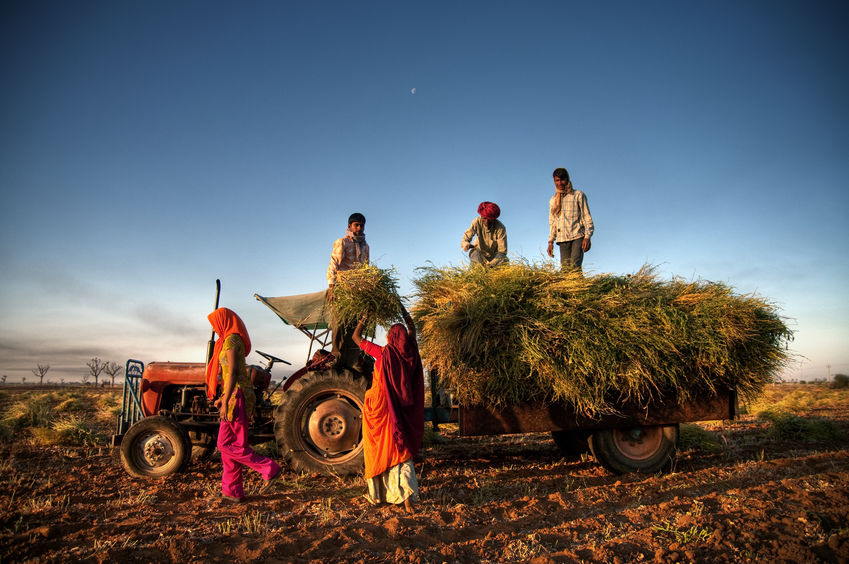When there are 1.3 billion people to feed, no one would be wasting their time on primitive methods that are proven to result in loss of time, energy, and investment.
With around 1.3 billion hungry mouths to feed in their respective countries, both India and China have made sure that they surge ahead with agricultural policies that guaranteed sustained growth.
The two Asian giants are keen on maximizing the most recent advancements in agricultural technology. India, especially, has been on a record crop production streak.
Here we take a glance at how a developing country with a struggling economy managed to pull off tremendous agricultural success.
Record Food Crop Production? Sure, Every Year!
India is the world’s second largest producer of rice, wheat, sugarcane, groundnut, vegetables, fruit and cotton. The growing demand for raw cereals, fruits, vegetables, and food products can be attributed to the growing population and a greater number of people—now above poverty line—who are able to purchase them.
India’s situation demands that it produces more and more crop every year, to keep up with the ever-increasing demand. The country’s agricultural system has delivered the same.
The last three years have witnessed record growth in food crop production. In 2020-2021 agricultural/financial year, India’s food grain output is expected to rise by 2.66% to reach all-time record high of 305 million tonnes.
The production was surplus and India exported a record amount of rice and wheat to other countries. Reports show rice exports in 2020 reached an all-time high of 13 million tonnes and 5-year high of 2 million tonnes for wheat.
Because of the pandemic, the government decided to ensure seamless food supply to the country’s vulnerable. The country made 92 million tonnes of rice and wheat available at a subsidized rate of less than a Cent (0.06 US $) for 800,000,000 million eligible people. That is equivalent to providing free rice and wheat for the American population for two years. Indian news outlets term it as “remarkable story of surplus production and stocks in public warehouses.”
But how did India manage to arrive this stage, where it can produce surplus, provide rations to more than half a billion people for free and still manage to export record amount of food crops?
Secret to Food Surplus: Keep Organic Farming at Bay
The fundamental reason for India’s agricultural success is its agricultural policy to encourage farmers to use fertilizers, pesticides, and implementation of modern agricultural technologies in sowing, harvesting, and irrigation. India is a large user of drip irrigation system that allows controlled watering, thus avoiding wastage of water and risk of being out of water during summer months.
The most important factor however are growth enhancers. Food crops need fertilizers and some of those crops need pesticides, herbicides, and insecticides too. Without these, it is unlikely that the crops can contribute to the farmer’s income. Use of enhancers increases yield, thereby farmer incomes as well and ensures the food security of the country.
China, the world’s leading producer of rice, and Japan use 5-8 times as much fertilizer as Indian farmers do. Scientists say that the environmental conditions in India, with a higher temperature and different soil type, does not require it to use as much fertilizers as China and Japan.
However, it is not easy for the country’s farmers to procure these plant growth enhancers. More than 75% of the farmers in the country own less than 2 hectares of land and many of them are poor. India is on a constant mission to make its farmers more economically stable.
This is one reason why they have heavily subsidized the prices of fertilizers like Urea and DAP, two of the most common fertilizers in the Indian market. In fact, subsidy for DAP was increased by as much as 140% last month, in order to negate the rise in international fertilizer prices. This in turn enables the farmers to continue using fertilizers.
Though the popularity of Organic farming is gaining momentum, it is unlikely to be used by both farmers who are financially volatile and farmers who produce crops at a large scale. Even those who experiment with organic will not be able to sustain it for a long time, without facing financial loss and reduced harvest. A move to Organic farming will not just risk the food security of 4 billion people, but also send more than a billion people into immediate poverty in countries like India and China.
However, the risks of organic farming and the reason behind the agricultural success of India and China is largely ignored by the mainstream media, radical environmentalists and organic crusaders. They continue to perpetrate the perception that Organic farming is good and that it will save the earth.
The truth of growth enhancers and the miracle that it is working in some of the poorest regions of the world must be told to the public. These growth enhancers—fertilizers, pesticides, etc.—are a lifeline to the crop, the farmers and billions of livelihood.
